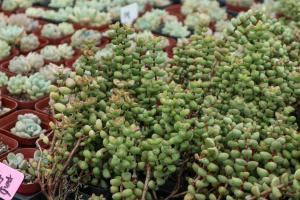How to Use Plant Pots Without Drainage Holes
It's no secret that proper drainage is essential for a healthy plant. However, not all plant pots come with drainage holes. This can be frustrating for plant lovers who want to use an attractive container without sacrificing plant health. Fortunately, there are a few tricks you can use to successfully use plant pots without drainage holes. In this article, we'll cover some essential tips for planting in pots without drainage holes.
Choose the Right Potting Mix
The first step in planting in pots without drainage holes is to select the right potting mix. Since excess water cannot drain from these pots, it's crucial to choose a mix that is well-draining and won't retain too much moisture. Avoid using garden soil, as it can become compacted and prevent water from draining properly. Instead, opt for a high-quality potting mix that contains perlite, vermiculite, or another lightweight medium that promotes drainage.
Add a Layer of Gravel or Stones
Another key step in planting in pots without drainage holes is to add a layer of gravel or stones at the bottom of the pot. This layer creates space for excess water to collect, preventing it from saturating the soil and suffocating the roots. Choose a layer that is at least 1-2 inches deep to provide adequate drainage.
Be Mindful of Watering
Since pots without drainage holes can't drain excess water, it's essential to be cautious when watering your plants. Overwatering can quickly lead to root rot and other issues, so it's best to water sparingly and monitor the soil's moisture level closely. Check the soil regularly by inserting your finger about an inch deep into the soil; if it feels dry, it's time to water. If you're not confident about how much water to use, consider using a moisture meter to determine when it's time to water.
Choose the Right Plants
Finally, it's important to select plants that can thrive in pots without drainage holes. Plants that prefer moist soil, such as ferns and peace lilies, are good options. Succulents and cacti are not suitable for these pots since they require a drier environment.
Overall, planting in pots without drainage holes requires a bit of extra care, but it can be done successfully. By choosing the right potting mix, adding a layer of drainage, being mindful of watering, and selecting the right plants, you can enjoy healthy, beautiful plants in any container, regardless of whether or not it has drainage holes.

 how many times do yo...
how many times do yo... how many planted tre...
how many planted tre... how many pine trees ...
how many pine trees ... how many pecan trees...
how many pecan trees... how many plants comp...
how many plants comp... how many plants can ...
how many plants can ... how many plants and ...
how many plants and ... how many pepper plan...
how many pepper plan...































